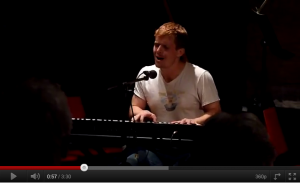For the Saturday morning breakout sessions at the Religious Education Association annual conference, I went to Ryan Gardner’s presentation titled “Improving Teacher Reflection in the Religious Education Classroom.” Gardner is doing his Ph.D. research on how paid religious education teachers at the Latter Day Saints Seminaries and Institutes of Religion (S&I).
Gardner introduced his work on teacher reflection with a quote from Joseph Smith, who once wrote about “serious reflection and great uneasiness.” Gardner suggested that often serious reflection by religious education teachers can often lead to great uneasiness. Certainly, this has been my experience supervising volunteer teachers, and I found it very interesting to talk about how serious reflection may often lead to greater uneasiness for teachers, at least in the short term.
His doctoral dissertation aims to come up with a practical, useable model for teacher reflection. He has recently concluded a research phase, where he did intensive qualitative field research of six S&I teachers, trying to determine what kinds of reflection they engaged in as teachers. He led us through his theoretical approach, and wound up presenting us with an instrument for teacher reflection. Continue reading “REA conference, part three”

